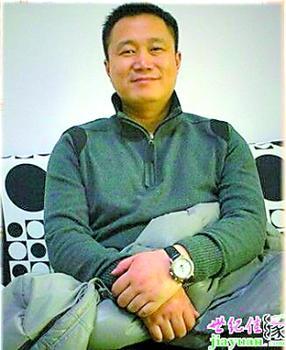 其圆五尺
其圆五尺考研干货分享,考研的那些真题应该如何正确地练习?
有考研er们经常会问关于考研真题,特别是真题中选择题的问题:“学长,经验贴分享的都是真题练习至少刷三遍,但是我刷完一遍之后,答案就在无意识中记下来了,后面再二刷三刷,选择题答案基本上就是秒选,怎么办?”相信很多同学在复习期间练习真题的过程中也会有类似的困惑。事实上,无论是政治、英语、数学,还是专业课,通常经验贴中说的“真题非常重要,至少要刷2~3遍”,这并不是指每一遍刷题,都只是简单快速地选择个答案而已。不同的情况下,刷题的目标都是不一样的。下面我就分以下几种情况详细说明一下——一、练第一遍真题对于一份新的真题、第一遍接触的题,首要目标是选出正确的答案。这种情况下,通常是在规定时间内要完成一整套的所有题目,所以,真题的第一次练习一定要保持有序的答题节奏,注意力集中,思考要时刻在线。这样才能做到不纠结、不犹豫,不会有审题不仔细的情况。练题过程中,不着急、不拖沓,养成属于自己的正常的答题节奏,不确定的题目要做好标记,先按照自己的第一感觉选,或者直接跳过,核对完答案后再去纠正、反思、弄懂每一道题。二、练第二遍真题第一遍题目都做完了,对完了答案和分数后,在回头复盘的时候,就相当于是第二遍接触的题了。这个时候,如果这道题做第一遍的时候选对了,那么在复盘过程中,给自己足够的时间,回想一下:做这道题目的过程中,用到了哪些解题方法?除了这个方法,有没有更直接更好更快的方法?如果没有其他方法,那就看看参考答案的解题思路是否和自己的做题过程中的思路一样?那如果这道题选错了或者被瞎蒙蒙对了,先不要看答案解析,要首先对错题进行自主分析:这道题为什么正确答案是这个?选错的那个选项是哪里错了?解题的过程中哪个步骤出了问题?考查的是什么知识点?以后碰到类似的题型,我应该注意哪些问题?归根结底,这么做就是为了查漏补缺。总结出属于自己的一套方法,以后在做同类型题目的过程中可快速执行,毕竟自己分析真正弄懂了的题目,才是真正消化了的。这样分析完一遍之后,再参考答案解析,对之前总结出来的结论进行优化和完善。或者给自己试着讲错题的解题思路:题目应该怎么做?正确答案为什么对?干扰项错在哪?如果能把自己成功说服了,那这道题目就彻底弄懂了。三、练第三遍&第四遍真题以后,再碰到做过的题,第三遍、甚至第四遍,如果题目忘记了怎么做的,那可以再重复一次第二遍的做题过程;如果题目有印象选择哪个答案,那么,知道为什么选这个正确答案之后,还要重点分析干扰项:比如,归纳命题人的命题思路、设置干扰项的常用方式,同时再复盘,所有做过的题目里,哪些题跟这道题是类似的?可以试着找出来并总结出一套同类型的题惯用的出题逻辑。如果说第一遍练题是站在学生的角度快速选答案,那么第二遍就是站在老师的角度做题目、答案、选项的拆分和解析;第三遍、第四遍练题,则是站在命题人的角度,去研究和揣摩出题思路。不仅选择题可以用这种思路去刷题,其他所有的题目都可以像这样练习第一遍、第二遍、第三遍、甚至第四遍。四、寄语21级考生在真题的练习上是会花很多时间的,有的时候一套真题做完,一个上午就过去了,再对完答案,又一个下午过去了,考研备考后期的很多时间也会花在真题上。所以大家在备考前期一定要尽量把所有知识点掌握,后期练起真题来才会游刃有余。当然,这个过程必然会是很辛苦的,但是,既然选择了考研这条路,那就需要全力以赴,能努力的时候,不要放弃任何一个可以努力的机会。加油!
 石保
石保22考研全年复习计划已出!想上岸就这么做!
最近看到很多22考研的小伙伴不知道怎么安排复习计划?刚好马上就要放寒假了,建议大家不要浪费这个假期,有些复习工作现在就可以开展了,你要知道,凡事赶早不赶晚!那我就说说22考研党当下可以做的4件事吧,方便还迷糊着的考研小白参考一下:1、了解考研常识,越详细越好!现在第一步不是立马看书,而是先要了解所有的考研常识。但凡你不清楚的都需要手动去查阅了解!如国家线、院校线、34所、报录比、复录比、英语一和英语二、数一数二数三、A区和B区、学硕和专硕、全日制和非全日制等等。2、收集院校、专业信息搜集信息包括目标院校近3年的报录比、复录比、院校线、学校排名、专业排名、学校录取情况(是否存在歧视或潜规则)、专业课的参考书目等等,最好赶在大三下学期3月之前定好!3、搜集复习资料(1)考研英语单词:《考研词汇闪过》这本单词书的收词很全面,5500的考纲单词都有,还按考频划分了单词重点,高中低频词加起来一共只有1700+,这些都是核心单词,重点记忆能帮你节省差不多2/3的复习时间!真题:英一《考研真相》(4件套)英二《考研圣经》(4件套)《考研真相》真的很好用,是我见过讲解最详细的真题书,里面的每个句子都是分层图解的,结构清楚,你一看就能看懂,就算是语法不好的小伙伴也能跟着看懂句子结构,长难句能吃透的话,就不用害怕看不懂文章了。除了句子讲得细,另外里面的每个重难点单词都有注释,还根据重要程度用不同的符号标注了出来,词汇量不够的小伙伴可以直接对照解析看意思和用法,不用额外去查意思,很省事,考前还可以利用真题书记生词,可以说是一举两得呢。所以,我的个人感受就是这本真的很适合基础弱(像六级没过)的人用,其他书都没这么详细。我看过当时舍友备考用的真题资料,里面只是在一篇文章里挑2-3个长难句讲讲就结束了,放到全文当中的话,只靠这几个句子解析,你还是看不懂文章意思,对于基础弱一点的孩纸真的伤不起……(2)专业课资料研招网或目标院校参考书;复习方法笔记、历年真题可以联系往届学长学姐或到公众号搜集。按照我去年的复习时间给大家一个参考,我是大三下学期3月份正式复习的,到12月考试,差不多将近10个月。1、3月~6月英语单词背完第一遍;如果你不跨专业,那么专业课用到的书要看完第一遍,整理出每章的框架;政治先不用复习。单词书:《考研词汇闪过》2、7月~9月英语真题做完一遍(一般是20年的),单词重复背第二遍,找到自己不熟的,重点标注重点记忆;真题书:《考研真相》(英二用《考研圣经》)专业课书开始背细节,并结合买到的学校真题,把往年考过的知识点加深记忆;政治开始看视频课,每天1小时,徐涛视频课很有趣,你可以当调剂心情,听完之后把涉及到的知识点花半小时梳理背过。3、10月~12月英语单词重复背第三遍,针对自己的薄弱题型重点突破,可以买那种专项训练的书,或者买套模拟题,只专攻某个题型,到考前真题至少要复习两遍,真题里设计的知识点必须全部吃透;专业课真题也再做一遍,对自己没记清的部分加强背诵;政治就是各种背背背,还有肖秀荣的押题一定要做,这个应该不用过多强调了吧,相信大家都知道。就我自己而言,我是先背了《风中劲草》,然后在考前20多天又背了徐涛的小黄书,大家可以参考一下,不用完全照搬我的复习计划,根据自己的实际情况来就行!22考研党目前的时间还算相对充足,学姐建议大家不要过于放松,毕竟每年的考研大军真的很“凶猛”,一不留神你就有可能会被淘汰。所以希望大家的准备能做得更充足一点,这样考上的机会才会更大,不要给自己留遗憾!
 大渡河
大渡河考研专题四之心理
对于应届学生来说(尤其是普通本科的毕业生),由于各公司的招聘要求越来越高,很多学子不得不选择进一步深造,导致近年来考研人数的涨幅越来越大,竞争越来越激烈。当学生们意识到这样的社会事实的时候,自然而然地产生了不同的心理变化,随着考研的准备过程,心里也会有不同的波动。报名时间10.10-10.31考研准备初期的同学,一般都有着极高的心气,对待学习也很有激情,有的恨不得一天学他个25小时,这样的心理状况其实也是不健康的,过于积极的前期态度,容易让人快速失去激情,激情过后还能剩下什么呢?对于正常的不能一直充满鸡血的同学来说,考研初期还是建议保持一个平稳的心态,保持你自己舒服的生活节奏,不要让自己的身体一开始就出现疲惫预警。当然,所谓舒服,不是懒惰,还是需要有一个合理的学习安排的,学习要考虑,健康同样也需要考虑,不要跟身边人比,她学16个小时不妨碍你只学12个小时,只要你是充分的利用好了你的时间就好了。网报流程不管你初期保持了怎样的心态,当你的战线拉得比较长的时候,心理疲惫是很多人都要面对的,你身边的考研的变化基本就是这样,从开始的座位难求,慢慢的,坚持五六个月之后,人数是在慢慢减少的,在这场持久战中,很多人在途中就掉队了;大多数人随时间变化,生理和心理双重压力下,会产生挫败感,失去斗志。主要就是因为长时间的重复学习,生活单调且枯燥。如同学习中所说的,每一位学子都要学会调整自己的状态,具体来说,合适的体育锻炼是必要的,每天或者每星期可以给自己规划合适的锻炼时间,保证身体状态;除此之外,找到合适的发泄途径也会对你有帮助,或许对着闺蜜、铁瓷的一场痛哭,或者是一次完全放空的休息(当你完全失去动力的时候,不妨给自己放个短期的假);对很多人来说。一顿美食可能会有很大帮助……所有准备考研的同学,准备得越久,压力越大;离初试越近,压力越大。于是就变成了考前怯场,认为自己不行,心理压力不断累积之下,很容易出现弃考情况。进行了长时间的准备,花钱报了不少的班,结果放弃了考研,这种情况普遍存在于各位同学身边。没心没肺在考研学子身上可能是个好事情,多给自己一点鼓励,一步一步踏实走,最终所收获的,一定会对得起你自己(不管是不是毒鸡汤,做对的事就好)。网报信息(部分,来源于研招网)考研一事,比我们想的简单,也比我们想的难,不要焦虑,那些已经工作的同学很优秀,你也很优秀啊,只是路选择的不一样嘛。保研的同学很优秀,考研的同学也有去中科院北大清华的啊,什么?你去不了北大清华,北大青鸟也可以啊。考研只会是你人生中的一个过程,你的成功不会仅仅因为考研成功,同样,失败也是如此,在合适的时间做了合适的事,心态平和一点,放弃也不是不可原谅的事,愿你积极阳光,走过这样一个难熬的时光,面带微笑。研招网2020年统考考生需准备的网报信息,看好你需要的报名信息,不要出现报名无效的笑话(一定去官网查看信息);读者可以留下你感兴趣的话题,供大家讨论。
 金印仇
金印仇考研——真题是性价比最高的资料了
不少同学的数学已经过完一遍了,也有开始着手真题的同学,大家都知道真题的重要性,真题可谓是考研复习过程中的核心资料。现在就开始刷真题的同学可以从87年的开始刷起。如果你的数学还是处于第一遍基础阶段,那就继续学,必用过早的着急用真题,不然真题的价值真的就大打折扣啦!既然真题这么重要,那真题到底刷几遍?市面上真题资料那么多选谁的呀?真题刷几遍具体刷几遍都是看你自己的具体情况、进度等等,以下是参考建议啦~1第一遍刷真题87-04年真题,不用作为考试掐着时间点做,如果错了很多,也不要担心,可能是因为早年的真题风格和现在是完全不同的,你需要做的是找到错误的题对应的知识点,然后复习相关内容,可以针对性的刷下1800或者1000等资料上相关部分的题,也可以回顾强化课的笔记,然后总结下不同知识点的思路和方法。04-19年的真题,就要严格按照时间考试,基础好的建议限时2.5小时内刷完,基础不好的限时3小时,掐短时间可以营造考场氛围,也能让注意力更集中。注意草稿纸上算题要工整,一方面方便检查,另一方面,有些考场可能只给1张草稿纸,自己一定要合理利用。2第二遍刷真题可以根据自己的情况留下2~3年的真题作为考前模拟,等一刷结束后,可以按照专题二刷真题,这个时候你就要清楚每道题对应了什么知识点,什么知识点对应有什么解法,比如求极限,你就要想到基本的极限类型以及定积分定义,幂函数定义,夹逼定理等。然后对于不理解的地方要去复习笔记,资料书,然后再去做做题进行巩固。3第三遍刷真题当二刷结束后,可以三刷真题的错题,这个阶段不仅要做真题错题,还要刷以前做错的题。所以从一刷二刷那会儿可以养成标记错题或者使用错题本的习惯。如果时间充裕还可以每周刷套模拟题练手,主要看自己的节奏而定。模拟题也要保证能三刷,保证拿到题有思路。小Tips如果真题正确率极高,也不要迷之自信,因为可能你刷的题中已经刷过了这些真题,而当你遇到新题的时候可能就没有这么好的手感,这些同学可以适当刷刷模拟题,拓展思维对于二刷错误率较高的同学,也不要过于悲伤,现在暴露情况总比考的时候出现好,抓紧复习相关知识,一定要针对性的做题,总结题型和思路。慢慢就会好起来了,这个时候不要去和别人比,也不要做模拟题,先安心吃透真题。用谁的资料有的同学在用书方面可能会出现不知道用用谁的资料,其实在真题资料大同小异,主流的就是汤老师,张宇,永乐的。比较推荐的是张宇的《真题大大全解》,不仅为专题做了一本书,还将历年真题做成了卷子形式,做的时候更有在考场的感觉,而且真题数量也比较多。当然如果已经买了其他真题也不用换,毕竟都是真题,内容是不会变的。
 陆沉
陆沉考研二战专题:在我最后一次也是唯一一次可以拼的时候,我赢了!
各位考研er,大家好。郑重说明:以下文章内容为2019年各专业勤思学员撰写的考研经验,文内均以第一人称视角论述,仅为帮助2020考研的学子了解目标院校考研情况,更好的复习备考。摘要:备考的每一天很长,需要你耐心的坐在书桌前,它也很短,可能只能背一章的书,做一张试卷。 备考过程是一个发现“自我”的过程,你会更了解自己的优缺点,明白自己要什么,适合什么。 希望我的经验能对你的学习有些许帮助。1.自我介绍大家好,我是2019考研的学姐,已经上岸啦,华南师范大学心理学拟录取,专业排名第一,初试413分,政治84,英语73,心理学综合256。首先是,希望看到我这篇经验贴的同学都能上岸,祝你们不辜负自己的努力。第一次考研是很迷茫的,不知道自己到底适合什么,喜欢什么,有了两次实习经历,都不是自己想要的,就想着去考研的,那考什么呢,当然是不考数学的心理学啊,哈哈哈!我一个期期挂高数的学渣,在某个夜晚,按下了淘宝的立即购买,我拥有了这几本陪我两年,天天都在看的书。期间不断怀疑自己,搬出寝室自己住,经常出去玩,终于没有令我失望的结果出现了,没有考上,总分343,初试线347. 第二次是从毕业之后,暑假的八月份开始的,这次我知道,这是我最后一次也是唯一一次可以去学习我想要学习的专业,从事我想从事的工作的机会。八月份我主要是看学习方法的书,包括东尼伯赞的思维导图以及超级记忆术,并且把艾宾浩斯记忆表打印了十张,每张分为半个月,记录每天专业课学习的内容。时间过得很快的,初试之后上了一个多月班,我查到分的时候,第一反应是老师改错了吧,第二反应是我一定不能复核成绩,哈哈哈,知道自己考的不错,但没想到那么高,以前看那些考400多分的,我都是膜拜他们。复试很快,也很慢的到来了,华师的复试真的很晚很晚,即使我自我介绍都记不住,只进行了半分钟,即使我心理物理法也没回答上来,复试成绩还是不错。请你们相信自己能做的比你们想象的更好。2.公共课篇(1)政治不要买很多书。我一战是买了超多书,肖秀荣全套十几本,任的题,蒋的,还有一个任老师,忘了全名了,我光是政治买书就超过五百。肖大大的书可能需要你自己总结一下,但是发挥空间也更大,毕竟更加详细嘛。重视错题,重视错题,重视错题!把1000题做三遍以上,错的题回到精讲精练,我是在旁边画正字,表示错的次数,不要写错的原因,这样你才能反复错,加深记忆。自己猜测会考哪些题,比如某个词会是单选题考点,多选题的几个选项。这样一方面你可以猜到选择题,一方面自己最开始就有意识的加深某方面知识的记忆。大题在后期要紧跟肖大大,尤其是压题部分,把肖大大的压题都背了,考试的时候写到你手软都觉得不够尽兴。(2)英语单词:真题多做几遍,很多单词自然而然都认识了。有那个时间不然看一本名著,保证效果更好。完型:基础好的完型可以直接七八分,基础不好的因为你没办法记忆那么多初高中学过的短语,词义辨析。所以完型真的不用花太多时间,把自己的阅读翻译和写作提上来之后有余力再学习完型。不用看那几个所谓名师讲解的完型技巧,什么红花词绿叶词,有那个时间不如多背单词。阅读:阅读我吃饭的时候放着哔哩哔哩的视频,听他讲解一篇阅读,用1.5倍速,差不多一顿饭的时间。你会发现阅读中的许多题就是考个方法,尤其是回到原文中对照答案,一定要回到原文,每道题每个选项都回到原文。新题型:新题型最重要的方法就是把握每一大段的中心思想,甚至可以简略的把中心思想写在旁边,第二是要把握每一段中的中心词,看他们出现的顺序以及指代关系。翻译:不用刻意买翻译的书,把真题每个句子自己翻译一遍,比看什么方法都有用,翻译翻到最后发现翻不出来的原因真的是单词,所以单词单词单词。淘宝有卖考研真题手译翻译本,但是个人觉得不划算,可以自己把真题的Word版每个句子分隔开,多翻译几遍,或者直接在草稿纸上翻译。作文:背三篇作文就够了,大小作文各三篇。不要过于自信,认为自己能够背许多作文并且在考场上灵活运用,相信我,你不会,你做不到,哈哈哈。掌握个套路,背大概十个万能句式也差不多了。书写平时就注意,写好一些。3.专业课篇初试的312统考核心就是背背背。这个背也是有技巧的。 普心:每一章按照小题和大题来记忆。小题自然是关键词,更多的是再认就足够,比如艾宾浩斯使用的是节省法。大题就是分点来记忆,比如认知学派的主要观点是“事行主信认”,一事件,二行动,三主动,四信息加工,五认知过程。 普心现在考的越来越细,我把许多书上不是正文的内容都背了,比如情绪理论里面关于詹姆斯的几点介绍,不背也请你们仔细看书,不要抱着这个看着就不是重点,肯定不考这种心态,怎么可能斗得过出题的老狐狸呢。发心:按时间轴或者按生理·认知·社交等发展特性来进行归纳总结,记住分析与综合。分析就是分析不同点,综合就是综合他们之间的联系。生理变化肯定会影响认知,影响社交等。 除了很琐碎的例如生理的变化,其他基本都是考大题,例如皮亚杰的理论还有道德的理论,这些都是很好记忆的大题,一定要抓住他们是相互联系,共同发展的。教心:学习理论和学习动机是大头。学习理论四个门派,要掌握每个门派的关键点,联结理论自然是刺激和强化,记忆班杜拉观察学习可以记住四过程分别是什么,然后第一个过程注意过程影响因素可以归纳为榜样行为,榜样特征,自身特点。记忆主要是有个框架,自己在框架基础上根据理解编一些内容就可以了。实心:实验心理学主要需要你掌握每种实验的类型及其优缺点,三变量及其控制方法反应时结合经典实验来记忆其原理,心理物理法三方法原理及其误差和控制,心理量表法和信号检测论。实验心理学是为你读研期间打基础,老师是想让你掌握原理,而不是记住每个听觉视觉实验。统计:统计实际上是最简单的,内容最少的。描述统计很简单,当做放松的材料多看几遍就可以了,哈哈哈。推断统计主要是根据数据性质来选择统计方法,区间估计克服了点估计的缺点,两个数分为相关和无关,样本与总体平均数,两样本平均数,方差分析适用于两个以上样本平均数。 后面的知识用的比较少,大家可能感觉更难,但是考的也挺多的,要引起重视,统计功效及其影响因素,效果量,线性方程的检验主要考选择题,卡方检验会考大题,但是都比较简单,独立样本三方法,相关样本三方法,注意他们之间方法的区别。测量:经典测量理论,无论是文字类还是公式大家都要记住,公式一定要会用,基本每年都会考。项目反映理论和概化理论主要靠选择题。这两年加大了对测验编制的考察,大家要按照测验的编制,施测,分数的解释等来把测验的程序记住,考简答题的可能很大,在这部分的记忆中,我还是按照每一个考点中中提取一个字,组成一句话来背诵。比如题目编制技术,一共有十个点,我就记忆的是目带误文争,独线能禁省。最后是各种测验,这部分很繁琐,大家最好是列一个表格,把他们的区别和联系搞清楚,还有各自的特点。例如16pf是基于卡特尔的特质理论,epq是基于艾森克的人格三维度理论等,这些都要进行区别,还有状态-特质焦虑量表,测量焦虑状态和特质状态,最好先做状态焦虑量表等这些小知识点,如果你觉得很混乱,你甚至可以去搜一下这个测验,自己来做一下,做的同时记忆这个测验的知识点,我觉得还是很有趣而且记忆深刻的。我当时就做了一些智力测验和人格测验。 时间规划:我主要分为了四部分,从现在到六月底,大家需要把书都看完,多理解,书里面没有理解的自己查资料,问学长学姐,解决掉,做好笔记,这个笔记就可以按照我刚才所说的背诵方法第一条来做,在笔记本旁边留一点空白,这样以后也可以改动。七八月暑期阶段,大家这时候就需要背书了,可以按照我给大家的第二条,艾宾浩斯记忆法来背,每天一章,最开始留给英语的时间多,到了七八天的时候基本上都没有时间给英语了,背到你发狂,然后这样不断的循环,一个暑期大概能把书背到一点五遍到两遍的样子,大家不要嫌少,到了九月份你会发现你背的越来越快。 九月十月很多时间都会给政治,专业课每天可能只有五六个小时,这个时候你需要把你能找到的题都做了,比如历年真题,但是大家不要买很多题,比如我当时买了一个叫笔为剑的出的什么1000题还是多少题,我忘了,不推荐大家买,还有什么一些资料,大家尽量在图书馆找,看几页它的题质量怎么样,不好的不要做,不要去网上买很多题浪费钱。简答题和论述题大家不要偷懒,不要求你写完整,但是关键词起码要写下来,口头上背出声,不要默背,默背和被出声的效果完全不同。 十月底大家基本可以背完四遍了。 11,12月份就是疯狂背书阶段,专业课和政治交叉着背,大家可以一边去散步一边背书,我觉得站着或走路背书的效果真的不错,头脑也会很清醒。把真题的大题多背几遍,书上很多记不清你都得把真题给记住了,因为那是非常重要的知识,尤其是反复考的。答题方法:无论你学了什么答题技巧,前提是你能够知道那些知识。首先,单选题,简单的你可以直接选,这部分题基本存在于普心和社心之中,很多不确定的可能在发心和统计中居多,发心可能你会搞混淆那个年龄阶段他们的表现出来的特征,这时候你可以联想自己的成长经历,或者如果他考的是社会性的内容,你可以联想一下他的认知方面的特点。统计的话用排除法,还有反证法,比如题目问正确的是哪项,你排除了两个,还有两个,你假设其中一个是正确的,你想一下有没有什么能够推翻这个结论的,我觉得这个方法比较有效。多选题,我们的关键词记忆法就可以派上用场了,在加上排除法,多选题最需要小心的就是老师挖坑,比如不等于写成等于,我们不仔细就忽略掉了。简答题的字数不要超过150字,条理清楚,一点一点的把知识写下来就好,不需要花太多时间写很多,论述题才是重头戏。论述题最难得分也是最容易得分的,大家看真题就知道,答案和简答题答案差不多,但是考试的答题纸每到论述题是满满一页,我们要写些什么呢?首先,当一道简答题做,把书本上你能记住的都分点写下来。然后,要有自己的思考,你可以举个例子,或者描述一下某个点设计的实验,然后再联想一下和这个知识点相关的其他知识点,挂的上钩的作为第四点第五点呈现出来。因为论述题老师的给分空间很大,你一定要表现出自己在思考,有自己的思想,是很有逻辑性的,联想能力强,适合做科研,这样可以在论述题上面甩开别人一大截。学姐碎碎念1、考研是否要搬出去住? 我知道很多同学在寝室里面可能因为室友晚上很吵,你早起别人不开心,室友关系紧张或者其他各种原因想搬出去住。我的建议:在你看到我文章接下来的一周,尝试去解决这些事情,要么和他们沟通解决,或者买耳塞等等,尽量不要出去住,一是适应新环境,二是房租会给你更大压力,三是住在外面,不好的室友可能会更加影响你的睡眠,四是你没有那么强的自制力的话,晚上不想睡,早上赖床都是很有可能的,毕竟不会断网断电。 如果寝室问题实在解决不了,你可以去找一个住宿条件好一些的房子,不要太在意价钱,以后你会知道这几个月多交一两千房租都是小事情,让自己休息好更加重要。最好找个志同道合的室友一起,可以互相监督,一起去图书馆。2、父母不同意考心理学怎么办?我的父母对我的学习都是很支持的,但是我有遇到过父母很不支持的同学。这时候你要想清楚父母的出发点以及你考研的目的,如果你没有那么想学习心理学,父母再不同意,后期你可能会放弃考研。我个人认为读研主要是为了进一步培养你的思考能力和学习能力,对跨考生而言尤其是这样。如果你只是为了有个文凭,可能你几年的工作经验可能更有价值,如果你是真的喜欢心理学,喜欢研究生生活,那可以和父母好好商量,人生那么长,去做自己喜欢的事情不是很棒的事情吗,在这方面不要太功利。3、心态经常爆炸怎么办?在初试前两个星期,我每天基本上只做到了有效学习三个小时,虽然一直都坐在桌子前面,但是老爱胡思乱想。所以请你们相信,我们都是普通人,有焦躁的情绪很正常,不要因为我们经常焦躁就以为自己考不上,进而变得更加焦虑不安。真正决定是否能考上的是有效时间,假设我们从现在开始能够在专业课上付出1000小时的有效时间,每天只需要不超过4个小时吧。每天给自己放松的时间,这个放松不要用来看剧打游戏,你可以去跑步,去坚持你的兴趣爱好,可以谈恋爱,第二天可以全身心的投入学习,而不是每天给自己规定15小时学习时间,没完成就觉得自己完蛋了。有效时间是最重要的!4、关于择校第一步是要认清你自己的能力以及你肯定自己愿意付出的代价。如果你自己是个学渣,学了好久都没有看完一两章的书,那只能说不要高估自己,你并不会突然之间就醒悟了,突然变成学霸状态。如果你确定自己能每天保证好几个小时的有效学习时间,接下来200多天都可以以顽强的意志力坐在书桌前学习,那么名校欢迎你。一定要一战成硕,二战压力更大,考研竞争只会越来越激烈。 312院校肯定会越来越少,选择312还是自命题要从多方面考虑。你可以用一天时间去找学长学姐,看看官网,比较一下学校实力,每年招生人数以及一志愿占比等,写几个备选院校,然后一个一个排除,最后留下一个,就不要变化了,不要花太多时间在择校上面。5、经常被打扰怎么办?请关掉手机,中午吃饭和晚上吃饭的时候回复一下消息就可以了,去掉任何的社团活动和与考研无关的班级活动。也许会有人来约你一起玩,一起打游戏,请你尽量减少这些时间。没有人会为你的时间负责,没有考上承担后果的也只是你自己而已。男朋友女朋友同理,许多人都是在考试之前被分手,两情若是长久时,又岂在朝朝暮暮。想一想,如果你没有考上,而且主要是男朋友或者女朋友的原因,你会不会很后悔。我并不是劝大家分手啊,而是你要知道无论是朋友还是一生的伴侣,都是能够接受这点小考验的,如果没有接受住,那很难相信你们以后碰到更严重的事情能够坚持住。希望你们能在2019年通过自己的努力,一步步稳扎稳打,迎战12月底的初试,获得期盼的成绩。苦心人,终不负!
 羔羊
羔羊「考研必看」专硕十年专题:考试扫盲篇
2019年的硕士研究生招录工作结束了。你知道吗?专硕如今已经走过了10年!2009年,教育部决定大部分专业学位硕士开始实行全日制培养,发放“双证”。当时,教育部计划,到2015年将使学硕和专硕的比例将达到1∶1。如今,我国的硕士研究生中,专业硕士占比达到56%,这是2009年以来专业硕士规模首次超过学术型硕士。十年中,大家对于专硕的看法和争议一直存在,也有很多应届考生一直在学硕和专硕中纠结。在这专硕十周年之际,鑫全为大家特别策划四期推送,从考试、读书、就业、故事几个方面,为大家深度解读专硕的发展,特别是会计专硕。请大家关注与期待。为此,我们还采访了很多学员(包含应届考上学员、正就读专硕学员、读完专硕已就业学员等),在这里,我们由衷地感谢大家的支持与配合,希望大家常回鑫全看看,我们永远做大家的后盾。专硕十年 — 考试学硕以培养教学和科研人才为主,授予学位的类型主要是学术型学位。专硕是具有职业背景的硕士学位,为培养特定职业高层次专门人才而设置。专业硕士学位主要包括:工商管理硕士专业学位(MBA)、公共管理硕士专业学位(MPA)、工程硕士(ME)、法律硕士(J.M)、会计硕士专业学位(MPACC)、公共卫生硕士专业学位(MPH)、农业推广硕士专业学位、兽医硕士专业学位、教育硕士专业学位等。17年年初,又新增了艺术硕士、体育硕士、风景园林硕士3个专业学位。全日制专业型硕士是国家为了克服学术型硕士的不足新增的一种新硕士,培养的是现在市场紧缺的应用型人才。非全日制研究生绝大多数都是专硕,学硕较少。在招生考试这个层面,专硕和学硕有不少区别。并且,很多学生选择专硕的原因,也正式因为这些区别。1、招生条件:【学硕】报考者一般无需有一定年限的工作经历。【专硕】一般不要求工作经验,招生条件和学硕一样,但报考某些专硕(如工商管理硕士等)、某些专硕非全日制,则有工作经验年限的要求。2、入学难度:一般,二者的入学难度取决于学校和专业的热门程度。但是对于大部分专业来说,专硕较学硕在考试科目上难度略低。【学硕】公共课英语科目考英语一、数一,难度比较大,备考战线较长。【专硕】公共课英语科目考英语二、数二数三,难度略低,备考战线相对较短。有些专业初试不用考专业课,这给很多跨考考生降低了难度。举例两个专业的学硕和专硕入学考试的区别:会计学 VS 会计硕士学硕:会计学[120201]初试考四门,政治、英语一+两门业务课,业务课一多为数学三,业务课二为会计学专业课。传统热门专业,对专业学科水平要求较高,全科备考,难度较大。专硕:会计硕士MPAcc[125300]初试只考两门:199管理类联考综合+英语二,复试才考察政治与专业课等。应届生可以报考,跨专业门槛低,近年升温速度极快,财经类名校及综合大学分数线很高。工商管理 VS 工商管理硕士学硕:工商管理[120200]初试考四门,政治、外语+两门业务课,业务课一多为数学三,业务课二为管理学专业课,自主命题。管理类报考热度最高的专业之一,全科备考,难度较大,不限制应届生报考。专硕:工商管理硕士MBA[125100]初试只考两门:199管理类联考综合+英语二,复试因学校不同差别较大,少部分学校面试在初试前进行并对录取结果有直接影响。考生人群庞大,本科毕业后三年及以上工作经验,专科毕业后五年及以上工作经验。应届生不能报考。3、调剂难度:在研究生招生工作中,由于招生计划的限制,有些考生虽然达到分数线,但并不能被安排复试或复试后并不能被录取,对这些考生,招生单位将负责把其全部材料及时转至第二志愿单位,这个过程即称为考研调剂。初试成绩符合复试调剂基本分数要求但在原报考单位没有复试资格,可以申请调剂。虽然在国家政策上,学硕和专硕都是允许并且都是有机会进行调剂的,但是鉴于考试科目难度和考察的范围程度,调剂的难度还是略有差别。【学硕】学硕调剂范围广、名额较多,并且很多学校是允许学硕调剂到专硕去的。【专硕】专硕调剂范围窄,有相关规定如:第一志愿报考工商管理、公共管理、旅游管理、工程管理、会计、图书情报、审计专业学位硕士的考生可相互调剂,但不得调入其他专业。并且近几年专硕越来越火爆,院校招生计划几乎都是爆满,调剂越来越难。另外,同专业的全日制调剂到非全日制希望较大,但非全日制专硕想要调剂到全日制几乎不可能。火爆的会计专硕在专硕中,有一个专业,近十年的发展,可谓是“神速”,那就是会计专硕MPAcc,这也是鑫全的主营业务NO.1。自2004年MPAcc教育试点工作开始后,办学点数量连年增加,时至2019年,全国已有256所办学点开设此专业。侧面反映出,会计专硕人才的市场需求量越来越大。相应的,院校的会计专硕招生计划增幅稳定,分数线也在不断上涨。根据中国教育在线数据显示,在研究生考试中,报考人数最多的十大专业中,会计硕士名列前茅。此外,有数据显示,近三年,大学生考研会有52%的学生选择跨专业考研,跨考生中44%的考生会跨考到会计专硕MPAcc。MPAcc报考总人数每年上涨,每年大部分院校报考人数呈上涨趋势,当然招生总人数每年也在上涨,但总体有些供不应求。所以每年大批院校分数线上涨。经过这几年的发展,到目前为止,考生初试成绩普遍越来越高。水涨船高,各院校分数线也逐步上涨,越来越高,竞争越来越大。特别是名校,有的报录比甚至突破了40:1,复试录取比例也突破了1.5:1,所以考MPAcc择校也是很关键的一步。2018年中央财经大学录取情况分析表更多会计专硕院校招生信息、统计数据请详询400-803-1010既然会计专硕竞争这么大,那为什么每年还是大概有十万考生报考呢?在备考阶段专硕和学硕有啥区别吗?专硕上岸的秘诀是什么?听听学姐学长们怎么说:当初你为何在学硕和专硕中,选择了考专硕?[录取北京交通大学的赵学姐]“考虑到如下几个方面:1.学硕注重学术能力,而我对深入的会计研究谈不上兴趣,对在权威期刊发表论文和学习数据建模等方面存在恐惧心理。2.专硕就读时间短,而且读研期间可以去实习,符合我以工作为导向的要求。3.没考虑过读博,只希望用研究生作为步入社会的缓冲期。4.2016年开始关注会计专硕考试,那时候大家都说管理类联考考试科目少,容易一点,就倾向于专硕。”[录取上海财经大学的王学姐]“从把握来说,由于我本科是文科,大学只学了文科高数,开始准备考研的时间较晚,财经类需要高数的学硕对我来说比较紧张,所以当时4月咨询的时候老师推荐了专硕,而且初试3门课:我本科学过逻辑,学的还挺好的;初等数学对我而言难度也还行,压力相比不大;英语二难度不高,可以争取高分。从未来规划来说,我不是很想做学术型研究,想读研究生是打算当作人力资本投资,帮助我以后找到更好的工作,时间上和目的上和专硕比较匹配。”[录取东北财经大学的王学姐]“首先,由于学硕考试科目中包含了三门专业课,而我本身是学ACCA(国际注册会计师)的,尽管中国会计准则在向国际会计准则趋同,但还是有一定不一样的地方。其次,专硕考试中的初等数学也就是初高中数学,对于一个理科生来说是比较容易取得高分的。最后,由于英语是自己的短板,而英语一的难度大大超过了英语二,因此为了上岸顺利选择了考专硕而不是学硕。”根据你所了解的,备考专硕的你和备考学硕的同学在备考期间的区别是?[录取财科所的韩学姐]“由于本人学硕和专硕都考过,因此主要区别是学硕是必须基础非常过硬,例如数学三很多题都是证明结论,比如证明拉格朗日定理,对这些定理要有非常深层次的理解,绝不是只会算数字,需要非常好的数学逻辑并作出严格的推导证明。学硕前期复习任务重于专硕。专硕前期复习科目比学硕少一些,但是做题时间非常紧张,第一反应必须正确,不像学硕一样完全有时间检查。专硕的题目偏实践,学硕偏理论。总而言之,两者各有侧重。”[录取上国会的李学姐]“相对于考学硕的同学,我压力相对较小,因为不用学习数学和政治,所以在初试备考阶段会相对轻松一些。但是在复试备考阶段,我的压力可能相对较大,因为考的专业课之前没有学过而且专硕复试很注重综合能力,所以还要多关注一些时事热点。”[录取西南财经的张学姐]“重视程度以及精神状态。学硕的考试科目难度大,一般能够坚持考学硕的同学都会积极准备,精神状态饱满,能吃苦。而专硕的科目简单,考这个的同学会轻敌,掉以轻心,降低对自己的要求,还有一部分本来打算考学硕的同学,因为贪玩,到了下半年突然发现复习时间不够,就会转到专硕来,认为专硕简单,可以轻轻松松考过,但是这些人一旦考研开始松懈,后面还是会继续放松对自己的要求。其实,大部分考专硕的同学都没有意识到难度不在于内容,而在于短时间内达到非常高的准确率,以及非常激烈的竞争,考研失败没有调剂的机会,仅凭聪明是不够的。”在备考专硕期间,你备考的心得是什么?你觉得你考上的根本原因有哪些?[录取人大的张学姐]“心得:不要过早准备,考研当年的三月开始完全可以,如果英语基础比较差的话,可以在寒假的时候提前背单词,英语的正确率是和词汇量挂钩的;要有同学一起备考,可以同一院校也可以不同院校,这样可以分享信息并且可以互相鼓励。根本原因:一是基础牢固,包括初试的数学、写作和英语基础以及复试的专业课基础,这一定是决定因素;二是择校正确,鑫全的赵鑫全、熊师路老师在择校上为我把了关,当时在央财和人的大的cc之间纠结,最后选择了更好一点的人大,最后发现人大的复试组成更适合我——考察基础、范围广。”[录取东北财经的王学姐]“我觉得在备考期间最重要的就是要合理分配时间。总结一站失败的原因,我觉得最关键的就是我在暑假学习用力过猛,导致在9月份开学后,已经没有新的、合适的题可以做,而二战过程中,鑫全工作室的半年集训对于课程的安排可以将各个时间段的学习内容落到实处,避免了走很多弯路。其次,要敢于直面自己的短板,我的短板就是英语,不只学的不好,也不爱学,但我还是坚持每天背单词,每天做1到2篇阅读锻炼语感,避免弱项拖后腿。”[录取西南财经的张学姐]“备考心得:注意身体!注意心态!我和我身边的一些小伙伴都是折在了这上面,心理压力太大容易生病,生病会打乱计划和节奏,进一步导致心理压力更大,恶性循环,非常影响考场发挥。考上的原因:(1)独立思考能力,拒绝做伸手党。我会经常自己思考应该怎么学习、之前做的不好的地方、现阶段自己的弱项、接下来需要怎么弥补等等,制定长期计划和阶段性调整计划。比如复习后期,我会设定目标分数,拆分成各科需要达到多少,现在的分数距离目标分数差多少,哪个模块能够提升以达成目标,经过分析发现论证逻辑分数波动较大,那么就会进行专项突破。每个人的情况不同,直接拿来其他人的方法未必适合,而且独立思考能力在任何阶段都是非常重要的,不仅仅是考研需要,学不会独立分析,即使侥幸通过研究生考试,也很难凭借自己的力量找到优质的工作。(2)计划性。制定计划并较为严格的执行,我会设定每本书做完的日期,设定时考虑一些特殊情况,使计划更加合理,平均每天需要做多少,每天按照计划执行,偶尔出现身体不舒服等突发状况无法学习,会在后面抓紧时间补回来。(3)注重效率。我在鑫全的北京考前集训期间,每天晚自习十点结束准时回去休息,从不熬无意义的夜,学习的时候就抓紧效率(我可以在一天的课程以外至少完成复习当天内容、背诵40个英语单词、2篇英语阅读精读、2套管综试卷做完加看完讲解),休息的时候好好休息,良好的精神状态和身体状态才是持续学习的保障,熬夜到凌晨、但是学习的时候却总开小差、自己感动自己是最没有意义的。(4)注重学习方法。以数学错题本为例。首先,我分析了做错题本的目的,是为了复习和总结方便,而非工作量的展示,所以我在做的过程中能省略的就省略,以省时间为原则,主要关注这道题我需要掌握的是什么,题目的入口(即通过哪里得出的思路)、解题技巧、公式等等,然后把相关的记录下来。第二,收录题目并不单纯看做对做错,单纯脑子犯抽计算错误、对以后做题没有借鉴意义的错题不会记录,相反,做题时思路有卡壳、蒙对、掌握不充分的题目都会记录。第三,为了复习方便,我采用的是活页错题本,后续复习时,我会将同类型的题目放在一起(如解题技巧相同、思路相同等),以便发现自己的弱项并有针对性地突破。(5)安静。这种安静不是说只要不出去旅游就可以,而是心里安静,不分心,不精力分散,减少和动摇军心的朋友联络,不用担心得罪人,很多年后,一事无成的话朋友都会离你而去,只有做出来的成绩才是自己的。学习是一件需要孤独的事。”十年来,鑫全见证了专硕招生考试的日益规范、招生热度日益火爆、竞争日益激烈...十年来,鑫全在专硕考试辅导上年年登上新台阶!汇聚业内顶级师资、独创同行争相模仿的专硕辅导课程体系、独创辅佐课程体系的测试模考体系、独家主编【精点系列】【一点通系列】每年销量遥遥领先的辅导书籍、严格把控课程与服务的每一个环节!下一个十年,鑫全愿陪你在专硕备考的每一天!下一期专题【专硕十年——读书】,鑫全将联合学长学姐,为你亲自讲述读专硕的那些经历,以及院校的专硕培养模式...准研究生们,下一期不见不散!
 富有
富有考研专题二之择校
在上回书咱们说到,每年,有超过50%的的考研学子大三时就确定了考研目标。那么问题来了,对于大多数学生来说,本科期间其实对研究生工作没有什么概念(当然不排除有一批优秀的同学,本科期间就各种积极的在实验室工作,四年时间就发表了各种论文的神人),那么剩下的学生,怎么选择学校的呢?“考研热”就目前所能找到的关于应届本科毕业生考研院校选择信息中,并没有一个综合性的研究,大多数的报告都仅仅局限于一个专业,或者是某个热门方向的考研难度分析,对于对考研完全不了解的学生来说,没有帮他开阔视野,所需要的应当是能开阔他视野,提高他选择价值的文章(这篇也做不到,别想了),但是希望帮大家捋一捋思路。根据目前的调查,学生在选择学校时考虑的主要是这几方面原因:一、本科院校不够理想,希望能去到更好的学校深造,所以报考学校的名气和实力就是大家的关注点(如果本身在读的学校就已经是国内顶尖大学,如果能在本校选一位好老师也是很好的,风险低,稳妥);二、结合个人所学专业和自身实力,选择合适的学校(更加理性地选择,有助于上岸);三、根据自身爱好选择专业、院校(根据爱好选择的考研,要考虑的问题可能就是如何保持激情,毕竟研究生学习类似于工作,把爱好变成工作,差别极大);四、为了满足工作日益变高的要求,提高自身的竞争力,选择性价比比较高的专业和学校。按照目前的已知状况来说,大多数学生更看重的是自身兴趣和专业实力,对于外界所说的热门和名气,很多大学生选择了有自己的傲气,不作考虑。考研院校选择是一个组合排列的问题,其中涉及城市(超一线、一线、二线等)、学校名气、专业实力,自信学子选择大城市顶级学校的好专业,其他人就有不同的抉择了,选择大城市一般院校的合适专业;一部分人愿意去偏远一点的地区,选择好学校,提高专业素养;一部分人就是直奔着专业去的,其他的一概不管。各有优劣吧,一个好的城市,能够在你毕业之后,给你提供更多的机会,更高的薪资;“名校”本身的就是一个优势,不从专业素养上考虑,好学校毕业起点就会更高也是事实,不仅如此,师资力量、研究平台、文化底蕴,都是选择名校的理由;只有“名校”值得选择吗?当然不是,他们也不是一网打尽,国内依然有一大批特色院校,具备极高的专业素养。当然,不管这个时候是不是绞尽脑汁,依然有一大批上岸之后“混日子”的研究生,祝愿各位能去到自己的理想院校,不断前行。坚持合肥工业大学管理学院翟浩老师、杨乾坤老师的《大学生就业与考研选择模型研究》;浙江师范大学法政学院王静老师、王敏老师的《全日制专业学位硕士成为考验新选择》;河南新乡医学院的庞强强老师、刘迎辉老师的《关于当代大学生“考研热”若干问题的探究》;厦门大学教育研究学院郑若铃老师、陈为峰老师的《考研,要用发展的眼光选择专业》。
 神保
神保考研政治(真题和答案)
小编今天一早起来发现一年一度的考研政治热搜又回来了,大部分人反映今年的考研政治题不难,并且非常多机构都表示压中题目,快来一起看看题目,欢迎留下你的态度。小编真的觉得政治考的绝对不仅仅是背诵的问题,是逻辑简单来说就是你好好审题以后抓住的题眼首先我们看一下真题(大题部分)。非常常规五道题,第一道题马原部分,第二道题毛中特,第三道题史纲,第四道题思修部分。34.马原马原部分我们的策略就是背好那些原理然后对应作答就可以,今年的第一道考题是实践是检验真理的唯一标准如果没记错的话,高中我们就已经学过了是不是?第二道题实践的重要性,这个问题并没有为难我们。马原部分我们的策略就是背好那些原理然后对应作答就可以,今年的时间是检验真理的唯一标准如果没记错的话,高中我们就已经学过了是不是?35.毛中特36.史纲毛中特一般是比较难的部分但是今年考的重大时政不考的宝宝们也知道今年是改革开放40周年纪念日,所以从选材上并没有为难大家;史纲属于简单部分,小编知道很多考研老师考前都会给史纲的答题模板,而且今年的考题史纲部分的题目两次飞跃,马克思给我们指明了方向都是平时大家耳熟能详的内容。37.思修思修部分第一问思想品质类,就是中华民族的传统精神品质的重要意义,第二问法律层面的讲述重要精神品质的重要性,首先得说一下社会主义法律在我国的地位吧,再联系一下为什么要用法律去保护,也就是保护了以后的意义;最后一部分时政外交,即使没有复习也能说上两句是不是?38.时政综上所诉,今年的政治之所以被大家说是简单的很大一部分原因就是材料和提问都是很老套的,就算不考研的宝宝们也熟悉的题目。对于没准备的宝宝们,只要你们逻辑清晰、言之有、结合材料、选择题好好做小编相信分数也不会很差,所以不要担心政治了大家好好准备剩余的几门。预测今年政治分数会高一些!
 荆棘花
荆棘花2020考研英语一真题及答案「完整版」!
2020考研英语一真题及答案【完整版】!【完形】Directions: Read the following text. Choose the best word (s) for each numbered blank and mark A, B, C or D on the ANSWER SHEET. (10 points)Even if families don't sit down to eat together as frequently as before, millions of Britons will nonetheless have got a share this weekend of one of that nation's great traditions: the Sunday roast. 1 a cold winter's day, few culinary pleasures can 2 it. Yet as we report now. The food police are determined our health. That this 3 should be rendered yet another quilty pleasure 4 to damage our health.The Food Standards Authority (FSA) has 5 a public worming about the risks of a compound called acrylamide that forms in some foods cooked 6 high temperatures. This means that people should 7 crisping their roast potatoes, reject thin -crust pizzas and only 8 toast their bread. But where is the evidence to support such adarmlist advice? 9 studies have shown that acrylamide can cause neurological damage in mice, there is no 10 evidence that it causes cancer in humans.Scientists say the compound is 11 to cause cancer but have no hard scientific proof 12 the precautionary principle it could be argued that it is 13 to follow the FSA advice. 14 it was rumourded that smoking caused cancer for years before the evidence was found to prove a 15Doubtless a piece of boiled feef can always be 16 up on Sunday alongside some steamed vegetables, without the York shire pudding and no wine. But would life be worth living? 17 ,the FSA says it is not telling people to cut out roast foods 18 , but rece their lifetime intake.However its 19 risks coming a cross as being pushy and overprotective. Constant health scares just 20 with no one listening.1. [A]In [B]Towards [C]on [D]Till2. [A ]match [B]express [C]satisfy [D]influence3.[A]patience [B]enjoyment [C]surprise [D]concem4.[A]intensified [B]privileged [C] compelled [D]guaranteed5. [A]issued [B]received [C]ignored [D]cancelled6. [A] under [B]at [C]for [D]by7. [A]forget [B]regret [C]finish [D] avoid8. [A]partially [B]regularly [C] easily [D]initially9. [A]Unless [B]Since [C]If [D]While10.[A] secondary [B]extermal [C] conclusive [D] negative11.[A]insufficient [B]bound [C]likely [D]slow12.[A]On the basis of [B]At the cost of [C] In addition to [D]In contrast to13.[A]interesting [B]advisable [C]urgent [D]fortunate14.[A]As usual [B]In particular [C]By definition [D]After all15.[A]resemblance [B]combination [C] connection [D]pattern16.[A]made [B]served [C]saved [D]used17.[A]To be fair [B]For instance [C]To be brief [D]In general18.[A]reluctantly [B]entirely [C] graally [D] carefully19.[A] promise [B] experience [C]campaign [D] competition20.[A]follow up [B]pick up [C] open up [D]end up答案(1-20)1. on2. match3. enjoyment4. intensified5. issued6. at7. avoid8. easily9. while10. conclusive11. bound12. on the basis of13. advisable14. after all15. connection16. served17. to be fair18. entirely19. campaign20. end up【阅读】Section III Reading ComprehensionPart A Directions: Read the following four texts. Answer the questions below each text by choosing A, B, C or D. Mark your answers on the ANSWER SHEET. (40 points)Text 1A group of labour MPs, among them Yvette Cooper, are bringing in the new year with a call to institute a UK "town of culture" award. The proposal is that it should sit alongside the existing city of culture title, which was held by Hull in 2017 and has been awarded to Coventry for Zozl. Cooper and her colleagues argue that the success of the crown for Hull, where it brought in220m of investment and an avalache of arts, out not to be confined to cities.Britain' town, it is true are not prevented from applying, but they generally lack the resources to put together a bit to beat their bigger competitions. A town of culture award could, it is argued, become an annual event, attracting funding and creating jobs.Some might see the proposal as a boo by prize for the fact that Britain is no longer be able to apply for the much more prestigious title of European capital of culture, a sought-after award bagged by Glasgow in 1990 and Livorpool in 2008. "A cynic might speculate that the UK is on the verge of disappearing into an endless fever of self-celebration in its desperation to reinvent itself for the post-Brexit world: after town of culture, who knows that will follow-village of culture? Suburb of culture? Hamlet of culture?It is also wise to recall that such titles are not a cure-all. A badly run "year of culture"washes in and out of a place like the tide, bringing prominence for a spell but leaving no lasting benefits to the community. The really successful holders of such titles are those that do a great deal more than fill hotel bedrooms and bring in high-profile arts events and good press for a year. They transform the aspirations of the people who live there; they nudge the self-image of the city into a bolder and more optimistic light.It is hard to get right, and requires a remarkable degree of vision, as well as cooperation between city authorities, the private sector, community groups and cultural organisations. But it can be done: Glasgow's year as European capital of culture can certainly be seen as one of complex series of factors that have turned the city into the power of art, music and theatre that it remains today.A "town of culture" could be not just about the arts but about honouring a town's peculiarities-helping sustain its high street, supporting local facilities and above all celebrating its people and turn it into action.21. Cooper and her colleagues argue that a "town of culture" award could [A] consolidate the town-city ties in Britain.[B] promote cooperation among Britain's towns.[C] increase the economic strength of Britain's towns.[D] focus Britain's limited resources on cultural events.22. According to Paragraph 2, the proposal might be regarded by some as [A] a sensible compromise.[B] a self-deceiving attempt.[C] an eye-cotching bonus.[D] an inaccessible target.23. The author suggests that a title holder is successful only if it [A] endeavours to maintain its image.[B] meets the aspirations of its people.[C] brings its local arts to prominence.[D] commits to its long-term growth.24. Glasgow is mentioned in Paragraph 3 to present [A] a contrasting case.[B] a supporting example.[C]a background story.[D] a related topic.25. What is the author's attitude towards the proposal?[A] Skeptical[B] Objective[C] Favourable[D] Critical答案(21-25)21.D focus Britain's limited resources on cultural events.22.B a self-deceiving attempt.23.D commits to its long-term growth.24.B a supporting example.25.C Favourable.Text2Scientific publishing has long been a licence to print money, Scientists need journals in which to publish their research, so they will supply the articles without monetary reward. Other scientists perform the specialised work of peer review also for free, because it is a central element in the acquisition of status and the proction of scientific knowledge.With the content of papers secured for free, the publisher needs only find a market for its journal. Until this century, university libraries were not very price sensitive. Scientific publishers routinely report profit margins approaching 40% on their operations, at a time when the rest of the publishing instry is in an existential crisis.The Dutch giant Elsevier, which claims to publish 25% of the scientific papers proced in the world, made profits of more than f 900m last year, while UK universities alone spent more than f 210m in 2016 to enable researchers to access their own publicly funded research;both figures seem to rise unstoppably despite increasingly desperate efforts to change them.The most drastic, and thoroughly illegal, reaction has been the emergence of Sci-Hub, a kind of global photocopier for scientific papers, set up in 2012, which now claims to offer access to every pay walled article published since 2015. The success of Sci-Hub, which relies on researchers passing on copies they have themselves legally accessed, shows the legal ecosystem has lost legitimacy among its users and must be transformed so that it works for all participants.In Britain the move towards open access publishing has been driven by funding bodies.In some ways it has been very successful. More than half of all British scientific research is now published under open access terms; either freely available from the moment of publication,or pay walled for a year or more so that the publishers can make a profit before being placed on general release.Yet the new system has not worked out any cheaper for the universities. Publishers have responded to the demand that they make their proct free to readers by charging their writers fees to cover the costs of preparing an article. These range from around500 to $5,000.A report last year pointed out that the costs both of subscriptions and of these "article preparation costs" had been steadily rising at a rate above inflation.In some ways the scientific publishing model resembles the economy of the social internet:labour is provided free in exchange for the hope of status, while huge profits are made by a few big firms who run the market places. In both cases, we need a rebalancing of power.26. Scientific publishing is seen as "a licence to print money" partly because [A] its funding has enjoyed a steady increase.[B] its marketing strategy has been successful.[C] its payment for peer review is reced.[D] its content acquisition costs nothing.!27. According to Paragraphs 2 and 3, scientific publishers Elsevier have [A] thrived mainly on university libraries.[B] gone through an existential crisis.[C] revived the publishing instry.[D] financed researchers generously.28. How does the author feel about the success of Sci-Hub? [A] Relieved.[B] Puzzled.[C] Concerned.[D] Encouraged.29. It can be learned from Paragraphs 5 and 6 that open access terms [A] allow publishers some room to make money.[B] render publishing much easier for scientists.[C] rece the cost of publication substantially.[D] free universities from financial burdens.30. Which of the following characterises the scientific publishing model?[A] Trial subscription is offered.[B] Labour triumphs over status.[C]Costs are well controlled.[D] The few feed on the many.答案(26-30)26.D its content acquisition costs nothing.27.A thrived mainly on university libraries.28.D Encouraged.29.A allow publishers some room to make money.30.D The few feed on the many.Text 3Progressives often support diversity mandates as a path to equality and a way to level the playing field. But all too often such policies are an insincere form of virtue-signaling that benefits only the most privileged and does little to help average people.A pair of bills sponsored by Massachusetts state Senator Jason Lewis and House Speaker Pro Tempore Patricia Haddad, to ensure "gender parity" on boards and commissions, provide a case in point.Haddad and Lewis are concerned that more than half the state-government board are lessthan40 percent female. In order to ensure that elite women have more such opportunities, they have proposed imposing government quotas. If the bills become law, state boards and commissions will be required to set aside 50 percent of board seats for women by 2022.The bills are similar to a measure recently adopted in Califomia, which last year became the first state to require gender quotas for private companies. In signing the measure, California Governor Jerry Brown admitted that the law, which expressly classifies people on the basis of sex, is probably unconstitutional.The US Supreme Court frowns on sex based classifications unless they are designed to address an "important" policy interest, Because the California law applies to all boards, even where there is no history of prior discrimination, courts are likely to rule that the law violates the constitutional guarantee of "equal protection".But are such government mandates even necessary? Female participation on corporate boards may not currently mirror the percentage of women in the general population, but so what?The number of women on corporate boards has been steadily increasing without government interference. According to a study by Catalyst, between 2010 and 2015 the share of women on the boards of global corporations increased by 54 percent.Requiring companies to make gender the primary qualification for board membership will inevitably lead to less experienced private sector boards. That is exactly what happened when Norway adopted a nationwide corporate gender quota.Writing in The New Republic, Alice Lee notes that increasing the number of opportunities for board membership without increasing the pool of qualified women to serve on such boards has led to a "golden skirt "phenomenon, where the same elite women scoop up multiple seats on a variety of boards.Next time somebody pushes corporate quotas as a way to promote gender equity,remember that such policies are largely self-serving measures that make their sponsors feelgood but do little to help average women.31.The author believes that the bills sponsored by Lewis and Haddad will [A] help little to rece gender bias.[B] pose a threat to the state government.[C] raise women's position in politics.[D] greatly broaden career options.32. Which of the following is true of the Califormia measure?[A] It has irritated private business owners.[B] It is welcomed by the Supreme Court.[C] It may go against the Constitution.[D] It will settle the prior controversies.33. The author mentions the study by Catalyst to illustrate [A] the harm from arbitrary board decision. [B]the importance of constitutional guarantees.[C] the pressure on women in global corporations.[D] the needlessness of government interventions.34. Norway's adoption of a nationwide corporate gender quota has led to [A] the underestimation of elite women's role[B] the objection to female participation on boards.[C]the entry of unqualified candidates into the board.[D] the growing tension between labor and management.35. Which of the following can be inferred from the text?[A] Women's need in employment should be considered.[B] Feasibility, should be a prime concern in policy making.[C] Everyone should try hard to promote social justice.[D] Major social issues should be the focus of legislation.答案(31-35)31.A help little to rece gender bias.32.C It may go against the Constitution.33.D the needlessness of government interventions.34.C the entry of unqualified candidates into the board.35.B Feasibility should be a prime concern in policymaking.Text4 :Last Thursday, the French Senate passed a digital services tax, which would impose an entirely new tax on large multinationals that provide digital services to consumers or users in France. Digital services include everything from providing a platform for selling goods and services online to targeting advertising based on user data, and the tax applies to gross revenue from such services. Many French politicians and media outlets have referred to this as a"GAFA tax," meaning that it is designed to apply primarily to companies such as Google,Apple, Facebook and Amazon-in other words, multinational tech companies based in the United States.The digital services tax now awaits the signature of President Emmanuel Macron, who has expressed support for the measure, and it could go into effect within the next few weeks.But it has already sparked significant controversy, with the Unite Sates trade representative opening an investigation into whether the tax discriminates against American companies,which in turn could lead to trade sanctions against France.The French tax is not just a unilateral move by one country in need of revenue. Instead,the digital services tax is part of a much larger trend, with countries over the past few years proposing or putting in place an alphabet soup of new international tax provisions. These have included Britain's DPT (diverted profits tax).Australia's MAAL (multinational antiavoidance, law), and India's SEP (significant economic presence) test, to name but a few. At the same time, the European Union. Spain,Britain and several other countries have all seriously contemplated digital services taxes.These unilateral developments differ in their specifics, but they are all designed to tax multinationals on income and revenue that countries believe they should have a right to tax,even if international tax rules do not grant them that right. In other words, they all share a view that the international tax system has failed to keep up with the current economy.In response to these many unilateral measures, the Organization for Economic Cooperation and Development (OECD) is currently working with 131 countries to reach aconsensus by the end of 2020 on an international solution. Both France and the United States are involved in the organization's work, but France's digital services tax and the American response raise questions about what the future holds for the international tax system.France's planned tax is a clear warning: Unless a broad consensus can be reached on reforming the international tax system, other nations are likely to follow suit, and American companies will face a cascade of different taxes from dozens of nations that will prove burdensome and costly.36.The French Senate has passed a bill to [A] regulate digital services platforms.[B] protect French companies interests.[C] impose a levy on tech multinationals.[D] curb the influence of advertising.37. It can be learned from Paragraph 2 that the digital services tax [A] may trigger countermeasures against France.[B] is apt to arouse criticism at home and abroad.[C] aims to ease international trade tensions.[D] will prompt the tech giants to quit France.38. The countries adopting the unilateral measures share the opinion that [A] redistribution of tech giants' revenue must be ensured.[B] the current international tax system needs upgrading.[C] tech multinationals' monopoly should be prevented.[D] all countries ought to enjoy equal taxing rights.39. It can be learned from Para 5 that the OECO's current work [A] is being resisted by US companies.[B] needs to be readjusted immediately.[C] is faced with uncertain prospects.[D] needs to in involve more countries.40. Which of the following might be the best title for this text?[A] France Is Confronted with Trade Sanctions[B] France leads the charge on Digital Tax[C] France Says "NO" to Tech Multinationals[D] France Demands a Role in the Digital Economy答案(36-40)36.C impose alevy on tech multinationals.37.A may trigger countermeasures against France.38.B the current international tax system needs upgrading39.C is faced with uncertain prospects.40.B France leads the charge on Digital TaxPart B Directions:In the following text, some sentences have been removed. For Questions 41-45, choose the most suitable one from the fist A-G to fit into each of the numbered blanks. There are two extra choices, which do not fit in any of the gaps. Mark your answers on ANSWER SHEET. (10 points)[A] Eye fix actions are brief[B] Too much eye contact is instinctively felt to be rude[C] Eye contact can be a friendly social signal[D] Personality can affect how a person reacts to eye contact[E] Biological factors behind eye contact are being investigated [F] Most people are not comfortable holding eye contact with strangers[G] Eye contact can also be aggressive.In a social situation, eye contact with another person can show that you are paying attention in a friendly way, But it can also be antagonistic such as when a political candidate turns toward their competitor ring a debate and makes eye contact that signals hostility.Here's what hard science reveals about eye contact: We know that a typical infant will instinctively gaze into its mother's eyes, and she will look back. This mutual gaze is a major part of the attachment between mother and child. In althood, looking someone else in a pleasant way can be a complimentary sign of paying attention. It can catch someone's attention in a crowded room, "Eye contact and smile" can signal availability and confidence, a common-sense notion supported in studies by psychologist Monica Moore.42. Neuroscientist Bonnie Augeung found that the hormone oxytocin increased the amount of eye contact from men toward the interviewer ring a brief interview when the direction of their gaze was recorded. This was also found in high- functioning men with some autistic spectrum symptoms, who may tend to avoid eye contact. Specific brain regions that respond ring direct gaze are being explored by other researches, using advanced methods of brain scanning.43. With the use of eye-tracking technology, Julia Minson of the Harvard Kennedy School of Government concluded that eye contact can signal very different kinds of messages,depending on the situation. While eye contact may be a sign of connection or trust in friendly situations, it's more likely to be associated with dominance or intimidation in adversarial situations. "Whether you' re a politician or a parent, it might be helpful to keep in mind that trying to maintain eye contact may backfire if you' re trying to convince someone who has a different set of beliefs than you," said Minson.44. When we look at a face or a picture, our eyes pause on one spot at a time, often on the eyes or mouth. These pauses typically occur at about three per second, and the eyes then jump to another spot, until several important points in the image. are registered like a series of snapshots. How the whole image is then assembled and perceived is still a mystery although it is the subject of current research.45. In people who score high in a test of neuroticism, a personality dimension associated with self-consciousness and anxiety, eye contact triggered more activity associated with avoidance,according to the Finnish researcher Jari Hietanen and colleagues "Our findings indicate that people do not only feel different when they are the centre of attention but that their brain reactions also differ." A more direct finding is that people who scored high for negative emotions like anxiety looked at others for shorter periods of time and reported more comfortable feelings when others did not look directly at them.答案(41-45)41. C Eye contact can be a friendly social signal42.E Biological factors behind eye contact are being investigated43.G Eye contact can also be aggressive44.A Eye fixactions are brief45.D Personality can affect how a person reacts to eye contactPart CDirections: Read the following text carefully and then translate the underlined segments into Chinese. Your translation should be written neatly on the ANSWER SHEET. (10points)Following the explosion of creativity in Florence ring the 14h century known as the Renaissance, the modern world saw a departure from what it had once known. It turned from God and the authority of the Roman Catholic Church and instead favoured a more humanistic approach to being. Renaissance ideas had spread throughout Europe well into the 17h century,with the arts and sciences flourishing extraordinarily among those with a more logical disposition. (46) with the Church's teachings and ways of thinking eclipsed by the Renaissance,the gap between the Medieval and modern periods had been bridged leading to new and unexplored itellectual territories.During the Renaissance, the great minds of Nicolaus Copernicus, Johannes Kepler and Galileo Galilei demonstrated the power of scientific study and discovery. (47) Before each of their revelations many thinkers at the time had sustained more ancient ways of thinking.including the geo-centric view that the Earth was a the centre of our universe. Copernicus theorized in 1543 that all of the planets that we knew of revolved not around the Earth, but the Sun, a system that was later upheld by Galileo at his own expense. Offering up such a theory ring a time of high tension between scientific and religious minds was branded as heresy and any such heretics that continued to spread these lies were to be punished by imprisonment or even death.(48) Despite attempts by the Church to suppress. this new generation of logicians and rationalists, more explanations for how the universe functioned were being made at a rate that the people could no longer ignore.It was with these great revelations that a new kind of philosophy founded in reason was born.The Church's long- standing dogma was losing the great battle for truth to rationalists and scientists. This very fact embodied the new ways of thinking that swept through Europe ring most of 17h century. (49) As many took on the ty of trying to integrate reasoning and scientific philosophies into the world, the Renaissance was over and it was time for a new era-the Age of Reason.The 17h and I8h centuries were times of radical change and curiosity, Scientific method,rectionism and the questioning of Church ideals was to be encouraged, as were ideas of liberty, tolerance and progress. (50) Such actions to seek knowledge and to understand what information we already knew were captured by the Latin phrase' sapere aude' or dare to know',after Immanuel Kant used it in his essay" An Answer to the Question: What is Enlightenment?".It was the purpose and responsibility of great minds to go forth and seek out the truth, which they believed to be founded in knowledge.答案(46-50)46.随着教会的教义和思维方式在文艺复兴时期黯然失色,中世纪与现代之间的鸿沟得以弥合,从而出现了新的及尚未开发的知识领域。47.在每个真理揭示之前,当时的许多思想家都采用了更古老的思维方式,仍旧沿用以前的思维模式,其中包括认为地球是宇宙中心的地球中心说。48.尽管教会试图镇压这-代逻辑学家和理性主义者,但人们对宇宙如何运转的解释却越来越多,并且以-种不容忽视的速度在增加。49.当许多人承担起将理性科学的哲学融入世界的责任时,文艺复兴时代已经结束,并且开启了一个新的时代。50.此类寻求知识和了解已知信息的行为被拉丁语概括为:“sapere aude"即"敢于求知”作文Section ll WritingPart A51. Directions:The students union of your university has assigned you to inform the international students about an upcoming singing contest. White a notice in about 100 words.Write your answer on the ANSWER SHEET.Do not use your own name in the notice. (10 points)小作文:通知留学生唱歌比赛 【参考范文】NoticeDec.21, 2019In order to enrich the campus life and provide the colorful life for you, the Students' Union is preparing the upcoming singing contest, which will be held in the auditorium in our university on the evening of December 31, 2019. Now, the Union is recruiting contestants for this competition.Anyone who are fond of signing or interested in the competition, please send his or her application to students’union@sohu.com before next Wednesday. Besides, there are generous awards in gratitude for this activity. Please do not hesitate to contact us if you have any queries concerning the singing contest. Meanwhile, volunteers for this activity are badly needed to assist us in organizing the relevant affairs.We are looking forward to your participation.The Students' UnionPart B52. Directions:Write an essay of 160-200 words based on the pictures below, In your essay, you should1) Describe the picture briefly,2) Interpret the implied meaning, and3) Give your comments.Write your answer on the ANSWER SHEET. (20 points)大作文:习惯良好的时间管理习惯 【参考范文】Portrayed distinctively by the two cartoons above is an impressive scene: a girl in the left picture is doing homework and saying that early completion is better. Nevertheless, the boy in the right picture is sitting in front of the desk and saying that he will not finish the homework until the last minute.Undoubtedly, the symbolic implication of the pictures is to show us that importance should be attached to the formation of good habits, especially the good habit of time management. On the one hand, efficient time management is critical to personal development. As the old saying goes,“Time is money," and in the fast-paced modern life, it seems that we always have a lot of things to do and we are very busy. In the face of such a situation, we have to realize that efficiency holdsthe key to saving time and time management skills hold the key to personal success. On the other hand, good time management habits play a vital role in the development of the whole society. There is no doubt that, to a large extent, social progress is closely related to the efforts of each indivial. If we can develop the good habit of time management, we are much more likely to improve efficiency and have a better performance in the learning and working process, which is anintegral part of social advances and prosperity.From what has been mentioned above, we can come to the conclusion that the sense of efficient time management skills is of equal importance in personal and social progress.Therefore,we ought to take advantage of the phenomenon to enlighten the public and the press is expected to take a lead in advertising the value of developing good time management habits. Only in this way can we have a bright future.以上便是整理的2020年全国硕士研究生入学统一考试英语一试题及答案,2021考研的小伙伴可以参考真题,准备明年12月的考研初试。下面分享一份公共课书单,希望对大家有用:【英语书单】单词:闪过英语《考研词汇闪过》按重要程度划分了频考词、基础词、偶考词、超纲词,划重点,后期冲刺只背高频词和基础词,省时间。真题:《考研真相》(英语二:考研圣经):一词一句讲解真题,重点词汇和每个句子都有详细讲解,不怕你看不懂,还有排除干扰项的方法,帮助提高答对率,适合基础弱的人。作文:英语一《写作160篇》/英语二《写作宝中宝》:通过词句段篇先教你学会写作文,再用三步作文法帮你拔高,专门针对基础薄弱的。【数学书单】《张宇真题大全解》:从94年到现在的真题都包括了,讲解很好,帮助研究数学题型。李永乐王式安660题:用这本书练习做题,都是经典题型!同济六版/七版《高等数学》上、下同济五版/六版《线性代数》课本:《线性代数》、《概率论》、《数理统计》【政治书单】官方红宝书(政治大纲解析);风中劲草(三本书)、肖秀荣系列:精讲精练、1000题、讲真题、形势与政策、冲刺八套卷、最后四套卷;蒋中挺冲刺5套卷;启航20天20题
 神魄
神魄考研过来人良心推荐:考研真题书《考研真相》太好用了!
网友投稿啊啊啊啊!考研初试成绩终于出来啦,本考研英语76分学姐要给集美们种草1本神仙真题书——《考研真相》4件套!真的真的太太太太好用啦!从一个六级都没过的英语渣到考研英语逆袭76分,我真的全靠《考研真相》!说下这本《考研真相》好用的点,听完你肯定会心动!(1)文章解析超级细!《考研真相》最大的亮点就是里面的文章解析超级详细,每个句子都有解析,而且还是图示的分层讲解,你跟着解析看就能看懂。当然了,就算语法基础不好,看着这个一级注释,二级注释,把每个句子的主干、成分都讲得很清楚,你看的时候,就会发现,你的脑子是跟着这个解析一步一步走的,逐步理解句子并掌握,再回头去看文章意思,就会发现理解起来很通顺,也不会有障碍,这就是《考研真相》的好用之处,原来讲得细,真的有用!效果是你自己完全能感受得到的!(2)翻译很贴心,逐句翻译+全文翻译!《考研真相》有2种翻译形式,逐句和全文翻译都有,你想详细分析句子的时候就看逐句的解析,想通读文章的就看全文的翻译,很方便,随你灵活安排!个人真实体验:《考研真相》真的太适合英语基础弱的考研党了!因为它每个句子都讲,你哪句不懂就看哪句就好了,句子拆开了看,难句子也就变成了简单句,语法基础不好还能跟着学,真的很有用!而且除了句子,重点的单词也有意思和用法的注释,看的时候不认识这个单词,也不用再查单词书或者百度了,多省事儿!如果你英语四级没过、六级没过、六级没上500分的话,我真心建议你选《考研真相》,去吧,用了你就会回来感谢我的!(提示一下:英一的用《考研真相》,英二的用《考研圣经》,别搞混了)下面就来分享一下怎么做真题的吧,做真题你可以参考以下5步方法:第一步做完真题后先自己翻译,遇到不认识的单词时,立刻把它记到笔记本上,一定要把它弄懂。主要是记这个单词在真题中的意思,至于其他意思不要管。其他不认识的单词以此类推。第二步遇到不懂的长难句,你就可以看看英语二的《考研圣经》、英语一的《考研真相》上的一句一句的句子图解,解析详细,学着拆分这个句子,把这个长难句搞明白,打好基础。长难句不要力求一遍就解决,很多长难句要通过反复的琢磨才能解决,第一遍不行,第二遍,第二遍不行,第三遍,等到第十遍的时候,我相信长难句一定可以解决。把特别难啃的长难句记下来,花时间去研究,把它解决掉。第三步做题的时候首先要看题目问的什么,通过问题定位到原文的哪一个点,找到原句子,进行分析,选出正确答案并且要思考:为什么选A,为什么不选BCD,一定要搞清楚原因。第四步做完题后,把全文在不看译文的情况下,翻译一遍这样做的目的是锻炼你对句子整体的把握,培养你的语感。让你知道知道整句话是讲的什么。第五步大约一篇文章下来差不多2个半小时,可以一篇文章用2天来解决如果是2天的话,那么第二天翻译的时候要把句与句之间的关系思考一下,上下句是什么关系,进行一个大概的梳理。

 40004-98986
40004-98986



